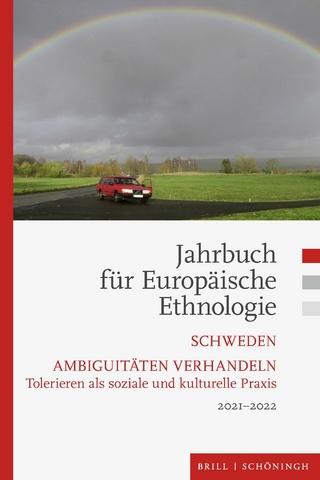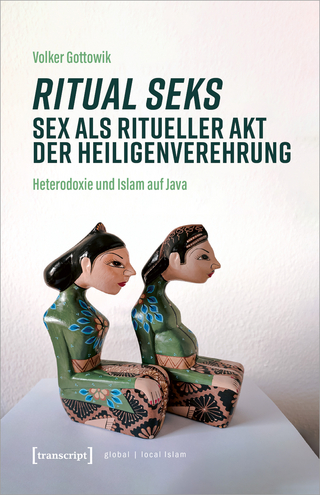
Inside Anthropotechnology
ISTE Ltd and John Wiley & Sons Inc (Verlag)
978-1-78630-175-8 (ISBN)
This book introduces the reader to design dynamics that combine often conflicting sets of competencies, but that are always anxious to respond to the contexts of the field.
Philippe Geslin, University of Applied Sciences, Western Switzerland.
Introduction ix
Philippe GESLIN
Chapter 1 Anthropotechnological Practice and Time Politics in the Development Industry 1
Matthieu BOLAY
1.1 Conducting research about water allocation when there is no water 2
1.2 Time, power and cotemporalities 6
1.2.1 Ethnographic temporality 9
1.2.2 Bureaucratic temporality 13
1.3 Anthropotechnological temporalities: the Tanzanian case 14
1.3.1 The oMoMi project 15
1.3.2 Project genesis: when does a project begin? 16
1.3.3 Supported iterations 18
1.3.4 Productive cotemporality: simultaneity, crowdsourcing and FabLab fabrication 20
1.4 Conclusion: designing technologies based on user temporality 23
1.5 Bibliography 25
Chapter 2 The Appropriation of Knowledge: An Anthropology of Transmission in the Context of Professional Training 27
Hervé MUNZ
2.1 The anthropotechnological approach to appropriation as a critique of the notion of transmission 28
2.2 Learning an industry 30
2.2.1 The “mechanical sense” as a way of knowing 31
2.2.2 Skilled vision or sight training 33
2.3 Transmission methods for the “mechanical sense” 36
2.3.1 Professional training beyond binary oppositions 36
2.3.2 The pedagogy of concealment 39
2.3.3 Objects as transfer vectors of the profession 41
2.4 A theory of transmission as appropriation and transformation 44
2.5 Bibliography 46
Chapter 3 At the Heart of the Sensibility: The “Profane” Gold of Madre de Dios 49
Carole BAUDIN
3.1 Prologue 49
3.2 Context: the challenge of a perceived nature 51
3.3 The scene: a humid and slippery topography 53
3.4 Gold mining: a skillful practice between nature and culture 56
3.5 Body techniques: embodied tempo 60
3.6 Body to body with the elements 64
3.7 Gold and mercury: sensual alchemy 66
3.8 The mythic body of miners 69
3.9 Sensitive memory: transmission of a “slippery” skill 70
3.10 Collective memory: the development of a social body 71
3.11 Local memory of development 73
3.12 Discussion: an intervention based on profane knowledge 75
3.13 Conclusion: contribution to anthropotechnology 79
3.14 Bibliography 82
Chapter 4 The Fall Between the Objectification of Engineers and the Subjectification of Elderly People: The Challenges of Mediation 85
Laura BERTINI
4.1 Introduction 85
4.2 New technologies for older generations 87
4.3 The cultural dimension of gerontechnologies 90
4.4 Defining and understanding the fall in the home 94
4.5 Common frames of reference 101
4.6 Anthropotechnology, process of legitimization and transfer of ethnographic knowledge 103
4.7 Conclusion 107
4.8 Bibliography 108
Chapter 5 In Step with Prosthetic Limbs! A Study of Scaling Up from Local Innovations 111
Chloé LECOMTE
5.1 A multisite study in northern and southern Vietnam 113
5.2 The conventional route: standard and existing prostheses 114
5.3 Forms of appropriation and illustrative stories 116
5.4 Taking the next step: an analysis of scale-up factors 119
5.4.1 Partnerships and history: anchoring in the local network to better scale-up 119
5.4.2 Local adaptation of techniques and objects, proof of appropriation 121
5.4.3 Adaptability of technologies in an autopoietic system 122
5.5 Discussions and a review of the anthropotechnological approach 123
5.6 Acknowledgements 126
5.7 Bibliography 126
Chapter 6 FabLabs: Product Design and Anthropotechnology 129
Gaëtan BUSSY
6.1 FabLabs 131
6.1.1 History 131
6.1.2 Philosophy 132
6.1.3 Evolution 135
6.2 A day in the FabLab 135
6.3 Anthropotechnology and FabLabs 138
6.3.1 Managing water in Tanzania 139
6.3.2 Pleco: the electrolytic pencil 141
6.4 Conclusion 143
6.5 Bibliography 145
List of Authors 147
Index 149
| Erscheinungsdatum | 20.08.2017 |
|---|---|
| Verlagsort | London |
| Sprache | englisch |
| Maße | 158 x 239 mm |
| Gewicht | 408 g |
| Themenwelt | Sozialwissenschaften ► Ethnologie ► Völkerkunde (Naturvölker) |
| Sozialwissenschaften ► Soziologie | |
| ISBN-10 | 1-78630-175-X / 178630175X |
| ISBN-13 | 978-1-78630-175-8 / 9781786301758 |
| Zustand | Neuware |
| Haben Sie eine Frage zum Produkt? |
aus dem Bereich


